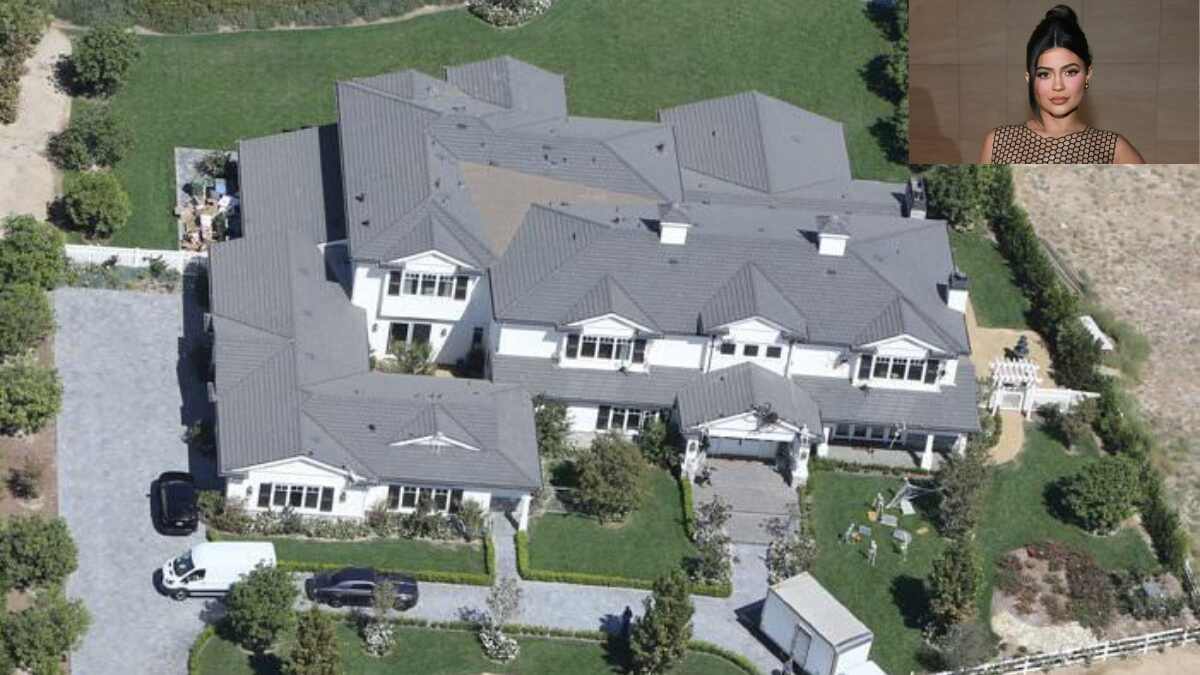Kylie Jenner is more than a reality TV star or social media influencer — she has become a cultural case study in how fame can be transformed into a high-functioning business empire. Her name alone sparks global curiosity, not only because of her celebrity lineage but because of the tangible assets and ventures that have positioned her among the youngest billionaires in history. Conversations around Kylie Jenner’s net worth aren’t simply about money; they reflect society’s fascination with the evolving mechanics of wealth, fame, and influence in the digital age.
What makes her story compelling is the blend of spectacle and strategy: sprawling mansions tucked inside gated communities, billion-dollar beauty deals, and a digital reach so vast it rivals entire corporations. Her celebrity wealth portfolio is not just a snapshot of luxury — it’s a blueprint for how modern moguls leverage image, branding, and cultural relevance into financial power. In studying Kylie’s holdings, we glimpse the broader shift in how celebrities redefine wealth today.
Inside Kylie Jenner’s Real Estate Empire
How Many Houses Does Kylie Jenner Own?
One of the most common fan searches is simple yet telling: how many homes does Kylie Jenner have? The answer shifts as she buys, sells, and upgrades, but her real estate portfolio consistently reflects a lifestyle built on both spectacle and privacy. At different points, Kylie has owned multimillion-dollar properties in Beverly Hills, Holmby Hills, and most notably Hidden Hills — a neighborhood favored by the Kardashian-Jenner family for its exclusivity and security.
Each purchase feels less like a random splurge and more like a curated extension of her brand. The sleek Beverly Hills mansion underscores her luxury aesthetic, while the sprawling Hidden Hills compound represents stability, family roots, and seclusion. Rather than a single dream home, Kylie’s houses form a collection that mirrors her evolution as both a young billionaire and a modern celebrity mogul.
The $36.5 Million Holmby Hills Mansion — A Closer Look
When Kylie Jenner purchased her Holmby Hills mansion for $36.5 million, the property instantly became a headline — not only for its staggering price tag but for its bold, architectural design. Spanning over 15,000 square feet, the estate is framed by soaring glass walls that blur the line between indoors and out, leading to a resort-style backyard complete with a luxury pool, fire pits, and outdoor lounge spaces. Inside, the home features multiple bars, a theater room, and sleek contemporary finishes that reflect Kylie’s polished, high-fashion aesthetic.
In Los Angeles’ celebrity enclave, a house like this is more than a residence; it’s a cultural statement. It represents arrival, influence, and the ability to turn fame into permanence. For Kylie, Holmby Hills isn’t just a place to live — it’s a symbol of her billion-dollar identity etched in stone and glass.
Hidden Hills Compound — Family-Oriented Luxury
Nestled inside the exclusive gates of Hidden Hills, Kylie Jenner’s compound isn’t just another mansion — it’s a hub that ties her back to her family roots. The Kardashian-Jenner clan has long favored this neighborhood, with Kim, Khloé, and Kris all owning homes just minutes away. For Kylie, living here means her daughter Stormi can grow up surrounded by cousins, while she enjoys the security and privacy of one of LA’s most tightly guarded communities.
The estate itself blends glamour with livability: sprawling lawns for family gatherings, oversized kitchens perfect for entertaining, and interiors designed to balance high-end luxury with a sense of comfort. In many ways, Hidden Hills captures the essence of Kylie’s life stage — a billionaire with global influence who still values closeness, routine, and the stability that comes from being near family.
Beyond Cosmetics — Kylie Jenner’s Business Stakes & Brand Value
Kylie Cosmetics and the Coty Deal Explained
In 2019, Kylie Jenner shocked the business world when beauty giant Coty acquired a 51% stake in Kylie Cosmetics for $600 million, giving the brand a headline-grabbing $1.2 billion valuation. The deal instantly positioned Kylie as one of the youngest billionaires, though Forbes later retracted its initial estimate, sparking a wave of debate about how much the company was truly worth.
At its core, the Coty deal explained more than just numbers — it was a turning point that highlighted the value of celebrity-driven brands in the global beauty market. For Coty, it was a bid to reach younger consumers through Kylie’s massive digital following. For Kylie, it transformed her from influencer to serious business figure, proving that a social-first brand could compete with legacy names. Even years later, the Kylie Cosmetics valuation remains a benchmark in celebrity entrepreneurship.
Expanding Into Skincare, Fragrance & Baby Brands
After conquering color cosmetics, Kylie Jenner set her sights on the next frontier: lifestyle expansion. With Kylie Skin, she tapped into the booming demand for clean beauty and minimalist routines, offering products that promised accessibility and everyday use compared to the glamour-driven vibe of Kylie Cosmetics. The move wasn’t just about skincare — it was about diversifying her brand beyond makeup bags and into bathroom shelves.
Soon after came Kylie Baby, a natural extension of her journey into motherhood. By offering gentle shampoos, lotions, and baby apparel, she positioned herself at the intersection of parenting and branding, where trust and relatability drive sales. These ventures mirror broader industry shifts: Rihanna broadening into Fenty Skin, Kim Kardashian launching SKKN. Kylie’s expansions show a savvy understanding that the future of beauty moguls lies in lifestyle ecosystems, not just single-product lines.
Digital Influence as a Monetized Asset
Kylie Jenner’s Instagram feed is more than a highlight reel — it’s one of her most valuable business assets. With over 400 million followers, she regularly ranks among the world’s top-paid influencers, with Kylie Jenner’s Instagram earnings often estimated at over $1 million per sponsored post. For brands, tapping into her audience means instant visibility with a demographic that trusts her aesthetic and lifestyle choices.
But it’s not just about a single post. Kylie has mastered the art of influencer marketing by seamlessly blending personal updates with product promotion, turning her page into both a social hub and a revenue stream. Whether teasing a new Kylie Cosmetics launch or partnering with global fashion houses, her digital presence converts attention into measurable sales. In today’s economy, Kylie’s influence is currency — one that continually compounds her billionaire status.
Investments & Hidden Assets — Where Kylie Puts Her Money
Equity & Startup Investments
While Kylie Jenner’s public wealth is tied to cosmetics and real estate, many observers speculate that her portfolio extends into quieter, less-publicized arenas: equity and startup investing. Unlike the flashy headlines surrounding her homes or luxury purchases, these moves happen behind the scenes, often shielded from public scrutiny. Still, industry insiders note that it would be surprising if Kylie hadn’t followed the path of peers like Jay-Z, who launched a successful VC fund, or Serena Williams, who has built a robust venture portfolio.
For celebrities of Kylie’s caliber, startup stakes aren’t just financial plays — they’re brand extensions. Investing in wellness tech, fashion disruptors, or consumer apps allows stars to align their cultural influence with products that mirror their lifestyle. While the exact details of Kylie’s investments remain largely undisclosed, the very possibility reinforces her image as more than a beauty mogul: a young billionaire thinking like a venture capitalist.
Cars, Jets, and Collectibles as Alternative Assets
Kylie Jenner’s wealth isn’t confined to real estate and brand equity — it also shows up in the form of luxury collectibles that double as cultural statements. Her Kylie Jenner car collection, which includes Ferraris, Lamborghinis, and Rolls-Royces, isn’t just about transportation; it’s a rolling display of status, taste, and scarcity. In the world of high-net-worth individuals, these vehicles often appreciate, especially limited editions.
Then there’s her private jet, customized with pink interiors and branded details, a symbol of both convenience and exclusivity. For fans, it epitomizes the separation between ordinary luxury and billionaire-level living. Beyond vehicles, Kylie has also amassed one of the world’s most envied handbag collections, with Hermès Birkins that can rival the price of a home. These assets may be lifestyle-driven, but they also serve as alternative investments — tangible markers of wealth that hold cultural and financial weight.
How Kylie’s Portfolio Stacks Up
Whenever wealth lists are published, one of the most searched questions is simple: Kylie Jenner vs Rihanna net worth — who comes out on top? It’s part of a wider curiosity about celebrity wealth comparison, especially among women who’ve turned fame into billion-dollar empires.
Rihanna’s Fenty Beauty, created in partnership with luxury powerhouse LVMH, has been valued at over $2.8 billion. Her diversified wealth, which also includes Savage x Fenty lingerie, has made her one of the richest female entertainers alive. Kim Kardashian, Kylie’s older sister, has built her fortune through SKIMS shapewear and SKKN skincare, brands that lean heavily into luxury positioning and high-profile collaborations. Beyoncé, while first and foremost a music icon, has extended her empire with Ivy Park and high-earning tours, blending artistry with business savvy.
Kylie Jenner’s uniqueness lies in her social-first strategy. Unlike Rihanna or Kim, she didn’t launch with corporate partnerships or high-fashion credibility. Instead, she harnessed Instagram as her distribution engine, creating hype-driven, direct-to-consumer sales that reshaped how beauty products could be marketed. That nimble approach allowed her to scale quickly, though it also subjected her valuation to scrutiny when the Coty deal was reassessed.
In comparing these moguls, Kylie may not always top the charts in raw numbers, but her portfolio represents a new model: one where a teenager-turned-influencer converted digital clout into one of the most visible celebrity wealth portfolios of the decade.
Methodology — How Net Worth Is Calculated
When people ask whether Kylie Jenner is truly a billionaire, the answer depends on how the numbers are tallied. Outlets like Forbes have their formulas, and understanding how Forbes calculates billionaire lists helps explain the fluctuation around Kylie’s status.
First, analysts look at real estate valuations — using comparable sales in neighborhoods like Holmby Hills or Hidden Hills to estimate the market value of her properties. Then come business stakes, such as her share in Kylie Cosmetics and related ventures. Here, valuations can swing dramatically, depending on how much weight is given to revenue projections, brand equity, and recent acquisitions like the Coty deal.
Other components include private equity investments, rumored startup stakes, and lifestyle assets — cars, jets, and collectible handbags that, while harder to appraise, still hold measurable value. Finally, there’s the wildcard of digital influence: Kylie’s Instagram reach, which generates millions in endorsements, but also depends on shifting algorithms and engagement trends.
Together, these factors explain why Kylie’s net worth isn’t a fixed figure but a moving target — one shaped as much by markets and media narratives as by the assets themselves.
My Close-Up View of Kylie’s Business Aura
I remember standing at a Kylie Cosmetics launch event, the room buzzing with anticipation before she even arrived. When Kylie walked in, it wasn’t just celebrity presence that shifted the atmosphere — it was what I’d call the Kylie Jenner business aura. The cameras followed her every move, but beneath the glamour, you could sense the machinery of strategy at work.
Her team moved with precision: stylists adjusting her look, publicists orchestrating press placements, photographers capturing angles that would later dominate Instagram. Every detail — from the pink neon lighting to the limited-edition packaging on display — felt curated for maximum impact. What struck me most wasn’t the extravagance but the efficiency. Kylie smiled, posed, and spoke with fans, yet behind that approachable persona was a calculated rhythm of branding.
In that moment, it became clear that Kylie Jenner isn’t just selling lip kits or skincare — she’s selling an experience, a cultural moment wrapped in beauty products. Watching the spectacle unfold, I understood why her brand resonates: it’s the rare blend of authenticity and orchestration, of everyday accessibility and billionaire-level scale.
The Fragility of Celebrity Wealth
Behind the headlines and luxury assets lies a sobering question: is Kylie Jenner’s billionaire status secure? Like many stars who turn fame into fortune, her wealth is tied not only to balance sheets but also to public perception. That connection makes her assets uniquely vulnerable to celebrity wealth risks.
For Kylie, brand value is inseparable from her image. If cultural tastes shift or her social media influence wanes, the foundations of her empire could weaken. Beauty trends, once the backbone of Kylie Cosmetics, move quickly — what feels essential today can feel outdated tomorrow. The same is true of digital platforms; an algorithm change on Instagram could reduce engagement and, by extension, revenue streams tied to influencer marketing.
History offers clear reminders. Kanye West’s Adidas fallout showed how quickly brand partnerships can evaporate, taking billions in valuation with them. Britney Spears’ conservatorship revealed how even global icons can lose control of their finances.
Kylie’s holdings may look untouchable, but sustainability depends on diversification, adaptability, and careful reputation management. For all its glamour, her portfolio is subject to the same volatility that shadows every celebrity entrepreneur — proof that even billionaires live at the mercy of shifting cultural tides.
What Kylie’s Assets Reveal About Celebrity Wealth Today
Kylie Jenner’s portfolio is more than a personal success story — it’s a lens into the evolution of fame itself. A decade ago, celebrities largely relied on endorsements, record deals, or film contracts to sustain their wealth. Today, stars are expected to be modern moguls, building businesses that outlast their screen time or chart positions.

From Gwyneth Paltrow’s Goop to LeBron James’ media ventures, celebrity entrepreneurship has become the new benchmark of cultural power. Kylie’s mix of beauty brands, real estate, and digital influence highlights how influence can be monetized across multiple sectors, often faster and more effectively than traditional corporations.
Her diversified holdings suggest a blueprint for the next generation: fame is no longer the endgame but the launchpad. In this sense, Kylie’s empire reveals not just the scale of her ambition, but the broader cultural shift redefining what it means to be a wealthy celebrity in the digital era.
More Than a Billionaire Headline
Kylie Jenner’s fortune has often been reduced to headlines about her net worth, but to see only the dollar signs is to miss the larger story. Her homes, beauty empire, and lifestyle assets aren’t just luxury indulgences — together, they form a carefully structured portfolio that reflects the logic of modern celebrity capitalism.
Kylie Jenner’s billionaire status is less about a single windfall and more about her ability to translate influence into durable assets, balancing real estate, brand ownership, and digital reach. In doing so, she has built more than personal wealth; she has built a cultural empire that demonstrates how fame itself can be monetized, scaled, and institutionalized.
For the next generation of entrepreneurs — especially those born into digital visibility — Kylie’s example suggests that the line between celebrity and CEO is disappearing. Her case is proof that in today’s economy, cultural capital can be every bit as valuable as financial capital.
Nishant Wagh is the founder of The Graval and a seasoned SEO and content strategist with over 15 years of experience. He writes with a focus on digital influence, authority, and long-term search visibility.





6 thoughts on “Kylie Jenner’s High-Value Holdings: Real Estate, Investments, and the Assets of a Young Billionaire”